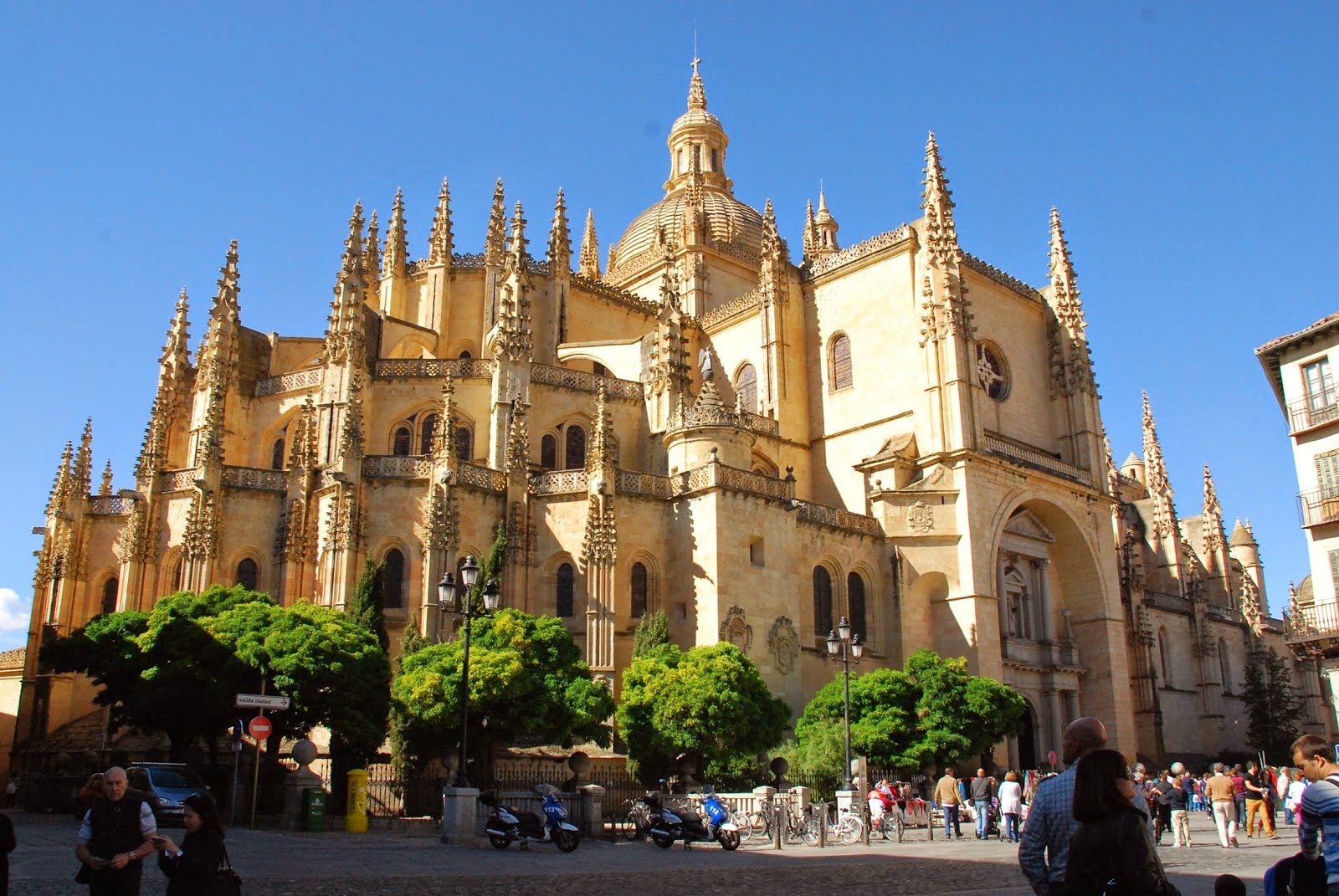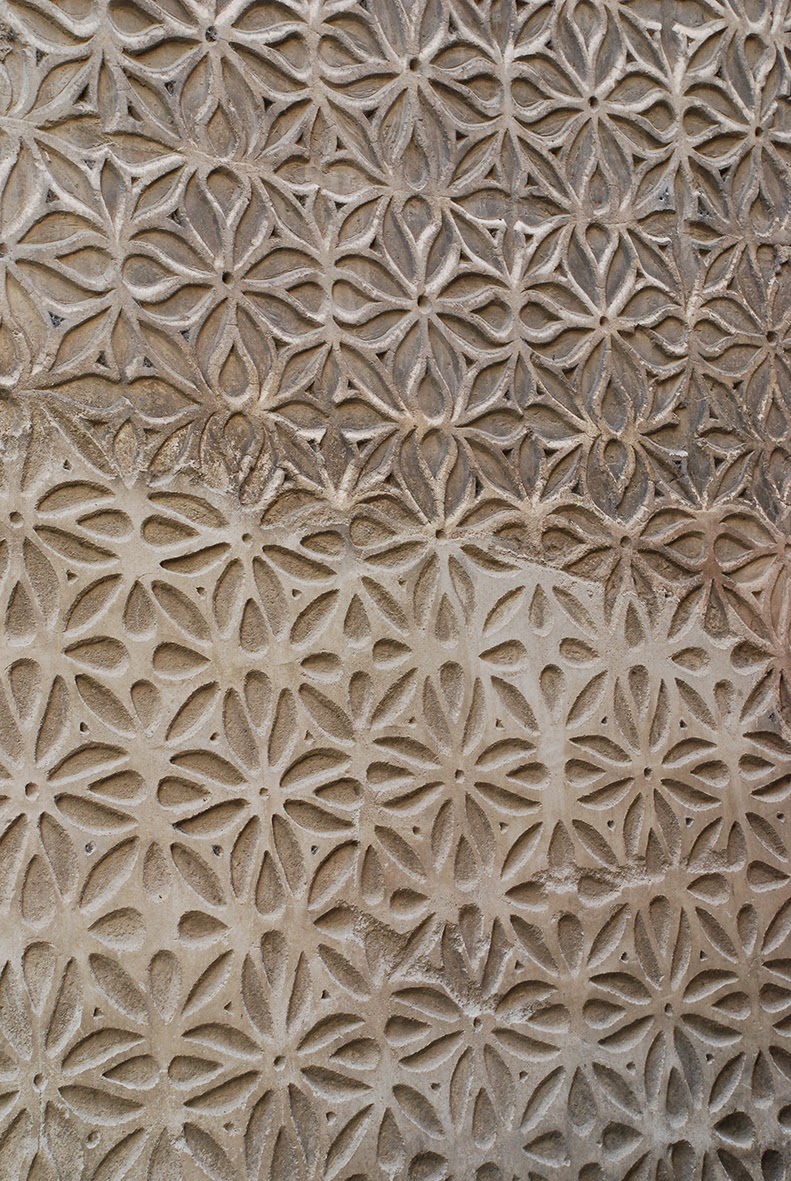I had long wanted to visit Toledo, but somehow never got round to it. Until now, that is. And, having waited so long to see it, I wanted to make the most of this beautiful city, but with just seven hours at my disposal, it was going to be a challenge.
I got the 09:20 Avant service from Atocha RENFE (€20/£16/US$27 rtn) and just 33 minutes later I was in Toledo. The train station, a sight in its own right, is on the eastern edge of the city. Had the weather been a little nicer – fortunately, it picked up later – I might have opted to walk to the city walls. As it was I hopped on a bus. I can't remember which number it was, but it cost €2.50 (£2/US$3.40) one way. Minutes later I was in Plaza de Zocodover. Let the sightseeing commence.
Toledo is a maze of narrow, winding streets and the map I had was far from accurate. Consequently it took a good half hour of wandering to find the so-big-you-can't-miss-it cathedral. Getting lost in a new city, at least in the daylight hours, can be fun, and in this case, I got to see some impressive doors on my travels...
 |
| One of the many old doors around the city |
 |
| A narrow street |
La Catedral Primada Santa María de Toledo (The Primate Cathedral of Saint Mary of Toledo) is one of the three 13th century High Gothic cathedrals in Spain. Construction was begun in 1226 and the last Gothic contributions were made in the 15th century. At 120 m (390 ft) long, 59 m (194 ft) wide, and with a maximum height of 44.5 m (146 ft), the cathedral is ginormous. It dominates the Plaza del Ayuntamiento, and can be seen from several places in the city.
I would have liked to have seen inside, but for the life of me I could not figure out where the entrance was! The only entrance I saw allowed me access to nothing more than an area for worship. (Sightseeing fail!). Nonetheless, I managed to get a glimpse of the cathedral's vast interior from it, although exploring it properly will have to be saved for another day.
 |
| Part of the main façade, from the Plaza del Ayuntamiento |
 |
| Stone carvings by the entrance I managed to find |
 |
| Statue on the side of the cathedral |
Spain was once home to the Sephardic Jews who lived and prospered alongside Christians and Muslims, and Toledo had one of the largest Jewish populations in the country. They prospered until the early 14th century, when anti-Semitism increased. Emigration was rife. Those who stayed risked torture and even death. Many were forced to convert to Catholicism, although these conversions were not always successful. Finally in 1492, the Catholic Monarchs, King Fernando II (r. 1479-1516) and Queen Isabel I (r. 1479-1504), perhaps in response to the conversos reverting back to Judaism, issued an Edict of Expulsion ordering the Jews to leave the country. It is believed that at least 200,000 Jews fled the country.
It didn't take me long to find the La Judería (the Jewish quarter) as it was signposted in English, Spanish and Hebrew on pavements at either end. Throughout the quarter, which stretches from Calle Taller del Moro to the city walls at the Puerta del Cambrón, there are blue and white tiles on the walls and pavements, marking the Jewish trail. Two of the city's ten synagogues still survive as they had been converted into churches following the expulsion of the Jews – the Sinagoga del Tránsito (now a museum) and the Sinagoga Santa María la Blanca.
 |
| Now entering the Jewish Quarter |
 |
| Bright reminders of the area's former inhabitants |
Built in 1180 by Islamic architects for Jewish use, the former Ibn Shushan Synagogue is a symbol of the cooperation that existed among the different cultures in Spain in the Middle Ages. It was designed in the Mudéjar style, which developed as a result of Muslim and Christian cultures living side by side. Mudéjar was less about the creation of new shapes or structures and more about reinterpreting Western cultural styles through Islamic influences. It is characterised by the use of brick as the main material, although the decoration has a distinctly Islamic flavour.
It became a church in early 1400s, but did not undergo any major reforms for the change. It took the name of Santa María la Blanca, the name by which it is still known today.
 |
| A taste of what's to come |
 |
| Inside the former synagogue |
 |
| Mesmerised by geometric shapes |
 |
| Close up of one of the pillars |
Dating from the late 14th century, the Puente de San Martín (St Martin's Bridge) was built by Archbishop Pedro Tenorio to provide access to the old town from the west across the River Tagus. The bridge has five arches with the largest one in the middle spanning 40 m (131 ft), a feat very few bridges at that time managed to match.
 |
| View across the río Tajo to the bridge |
 |
| The bridge's largest arch spans 40m |
A functional station was built to coincide with the railway reaching Toledo in 1898. Twenty-one years later, it was replaced with a new station, Estación de Toledo designed in the Neo-Mudéjar style.
 |
| The clock tower which is reminiscent of other clock towers in the city |
 |
| One of the doors to the station |
 |
| The platform clock |
 |
| Last view of Toledo from the train window |
I had waited so long to see this feted city, and yet I found myself disappointed. Sure, I missed off some major sights, such as the Alcázar and Casa y Museo de El Greco, but I just didn't get the hype. The narrow streets are nice enough, but a little bit samey after a while. Throw in the numerous cars driving at breakneck speed with absolutely no regard for pedestrians, and it all begins to feel a little unpleasant. Granted the sights are interesting, but not necessarily more so than in other easily-accessible cities. As with everywhere, I'm glad I went, if only because I got to see the beautiful former synagogue. To be fair to the city, it probably does deserve a second chance, but I'm not in any hurry to go back.























































